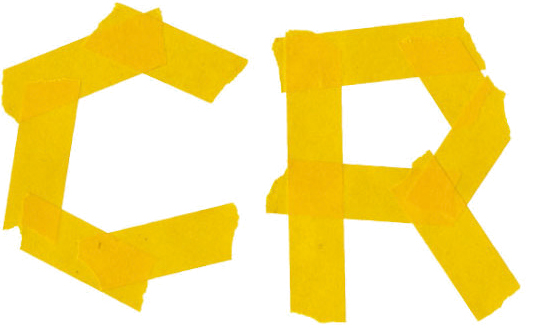At the Creative Reconstruction: Vision Formulation 2, 7th Session, Kenji Kai, Chief of Projects & Support, Sendai Mediatheque, was invited and he gave a talk titled, “Vision (which comes later) Formulation – Vision is created while working (I suppose)”.
Keeping visual images of the disaster-stricken areas recorded by both the victims in Sendai and those in unaffected areas, each in their own thoughtful ways, was one of the activities of Sendai Mediatheque. When entering the disaster-stricken areas and taking videos of the scenes, he mentioned that many of the participants would wonder if they had the right to record the images.
In the event of a catastrophe or a major accident, it does not mean that only the person or party involved has the right to talk about it. He said that what is important is, even if you are an outsider, how you earn the support so that you are able to speak out and how you approach the person affected. (Akagi)
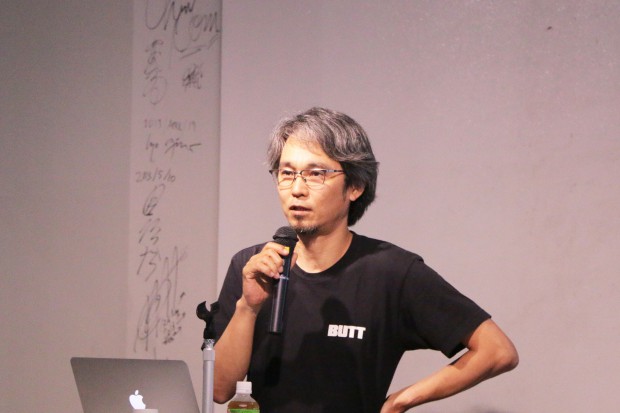
Category Archives: Lessons
Vacant Properties Team Visits “Toride Art Project (TAP)”
On May 15, the Vacant Properties Team went on a study-tour to see the “Toride Art Project (TAP)”. TAP, which started in 1999, is a project carried out in collaboration among 3 parties, the citizens and the city government of Toride and Tokyo National University of Fine Arts and Music, using the city of Toride as a field. The city of Toride is attempting to become a city of art, and the project is attracting attention as a project that is employing “art” for town-development. We asked to conduct the tour to study as a reference case for the Vacant Properties Team’s project to make use of vacant homes and properties in Hojo. It was very interesting and meaningful, since the staff showed us its activity to revive a vacant house with art and let us see other cases, too.
With the inspiration acquired during this tour in our hearts, we would like to continue our activities.
(Muranaka, 4th Year at College of Policy and Planning Sciences)
Toride Art Project (TAP) Website
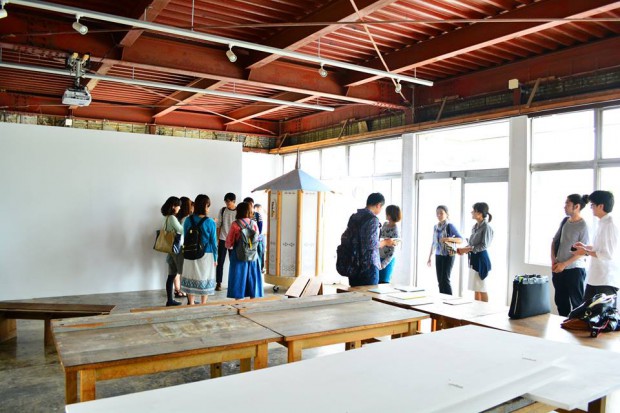
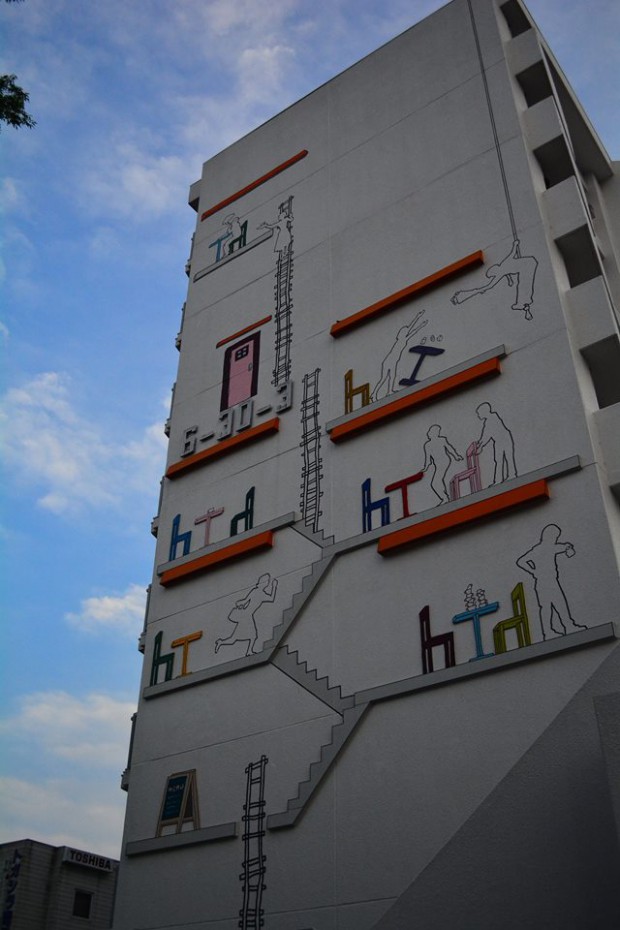
Preview: Creative Reconstruction: Vision Formulation 2, 7th Session
At the Creative Reconstruction: Vision Formulation 2, 7th Session, Kenji Kai, Chief of Projects & Support, Sendai Mediatheque, will be invited to give a talk titled, “Vision (which comes later) Formulation – Vision is created while working (I suppose)”. Please come and participate, as anyone is welcome to attend. (Akagi)
Venue: Tsukuba University, Bldg. 6A, Rm208
Date & Time: Friday, May 29, 12:15〜13:30
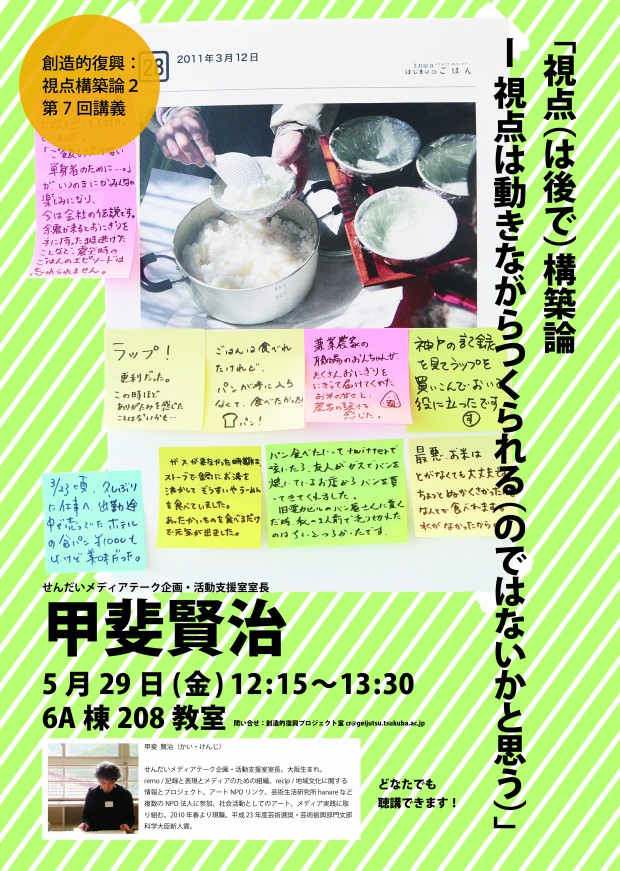
Creative Reconstruction: Vision Formulation 2, 6th Session
At the Creative Reconstruction: Vision Formulation 2, 6th Session, Yusuke Kakei, Head of issue+design, was invited and he gave a talk titled, “Social Design: The Design Mentality That Solves Local Issues”. The focus of his lecture was on the activities of issue+design, which solves various social problems by employing the power of design. To change from a society that is dependent on public aid to a type of society that is self-reliant and mutually cooperative, people need to be motivated to participate, and it is the strength of design, art and beauty that can motivate a movement to drive people to want to participate. It is something that relates to our CR activities as well. (Akagi)
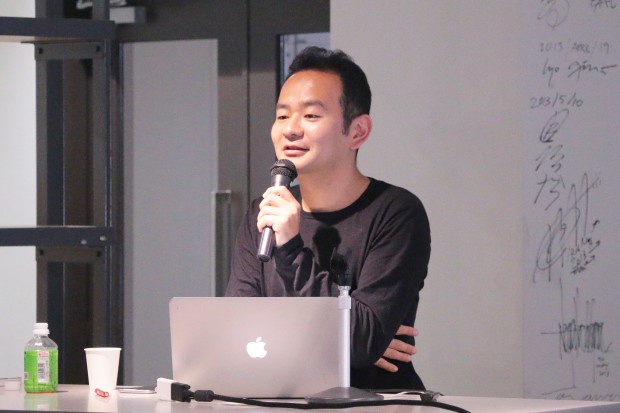
Preview: Creative Reconstruction: Vision Formulation 2, 6th Session
At the Creative Reconstruction: Vision Formulation 2, 6th Session, Yusuke Kakei, Head of issue+design, will be invited to give a talk titled, “Social Design: The Design Mentality That Solves Local Issues”. Please come and participate, as anyone is welcome to attend. (Akagi)
Venue: Tsukuba University, Bldg. 6A, Rm208
Date & Time: Friday, May 22, 12:15〜13:30
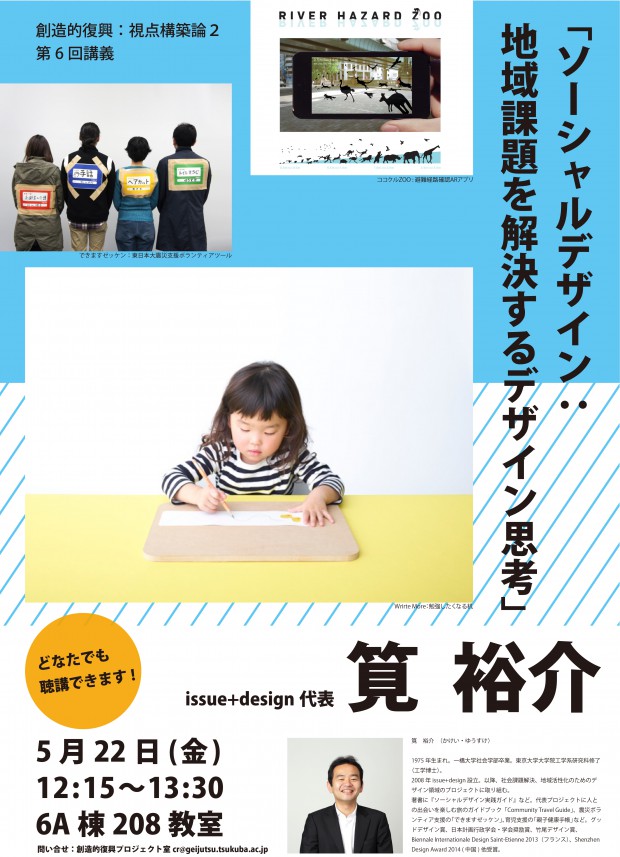
Creative Reconstruction: Vision Formulation 2, 5th Session
At the Creative Reconstruction: Vision Formulation 2, 5th Session, Nobuaki Takekawa, the contemporary artist, was invited and he gave a talk titled, “Children who pretend not to see, and children who jeer.”
He began explaining about the structure of bullying among children and went on to talk about and analyze hate-speech, demonstrations, the anti-nuclear power movement and such.
He spoke about the fact that a build-up of small activities can bring about a large trend and about the changes in the positionality of those affected after the 3.11 catastrophe. I felt that both were deeply relevant to the future of our CR activities. (Akagi)
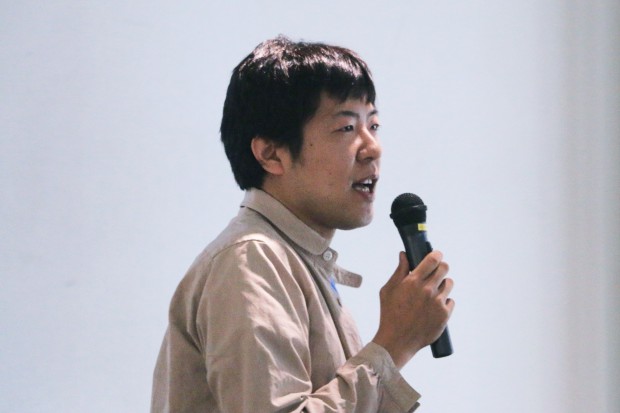
Kamado Project takes part in “Reconstruction: Hojo Spring Market”
On May 6, the Kamado Project took part in “Reconstruction: Hojo Spring Market”. It has been 3 years since the tornado hit the city. The weather turned out to be nice and more people came out than last year.
This year, we conducted a workshop to cook rice on the kamado (Cooking stove) with the students of Hojo Elementary School and Tsukuba High School, and we also sold chimaki onigiri (Bamboo wrapped rice balls), which were cooked on the kamado.
Six elementary school and 5 high school students participated in the workshop. The elementary school pupils were very excited to see a kamado for the first time and had fun starting the fire. Local people also took part on the spot, and some delicious rice was cooked as everyone smiled and had a good time around the kamado. The chimaki was all sold out, and it turned out to be a fulfilling day, and, hopefully, people became more familiar with the kamado. (Touda, 3rd Year at School of Art & Design)
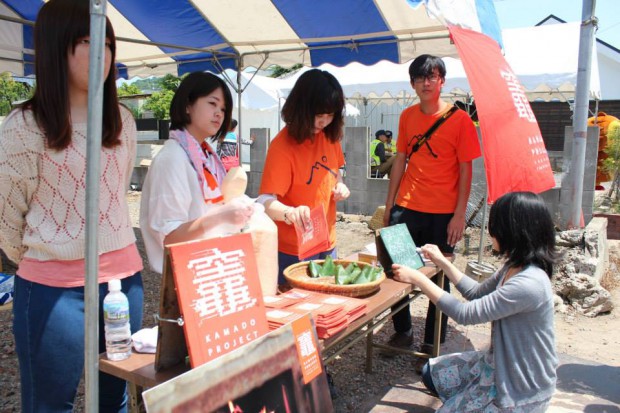

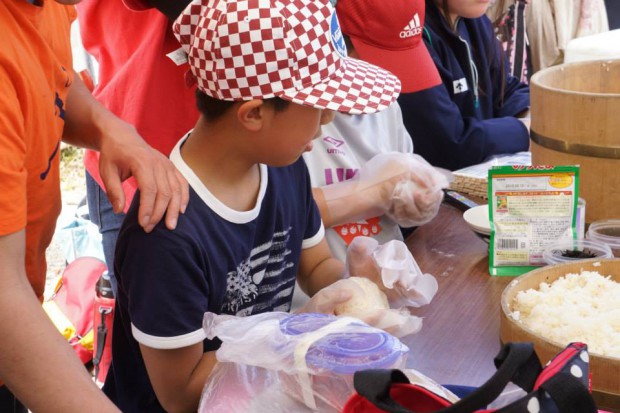
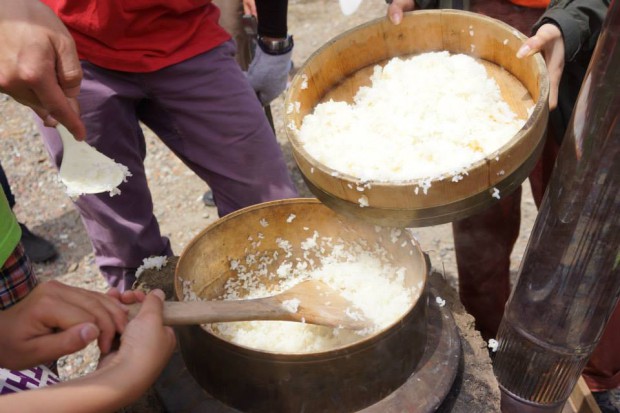
Preview: Creative Reconstruction: Vision Formulation 2, 5th Session
At the Creative Reconstruction: Vision Formulation 2, 5th Session, Nobuaki Takekawa, the contemporary artist, will be invited to give a talk titled, “Children who pretend not to see, and children who jeer.” Please come and participate, as anyone is welcome to attend. (Akagi)
Venue: Tsukuba University, Bldg. 6A, Rm208
Date & Time: Friday, May 15, 12:15〜13:30
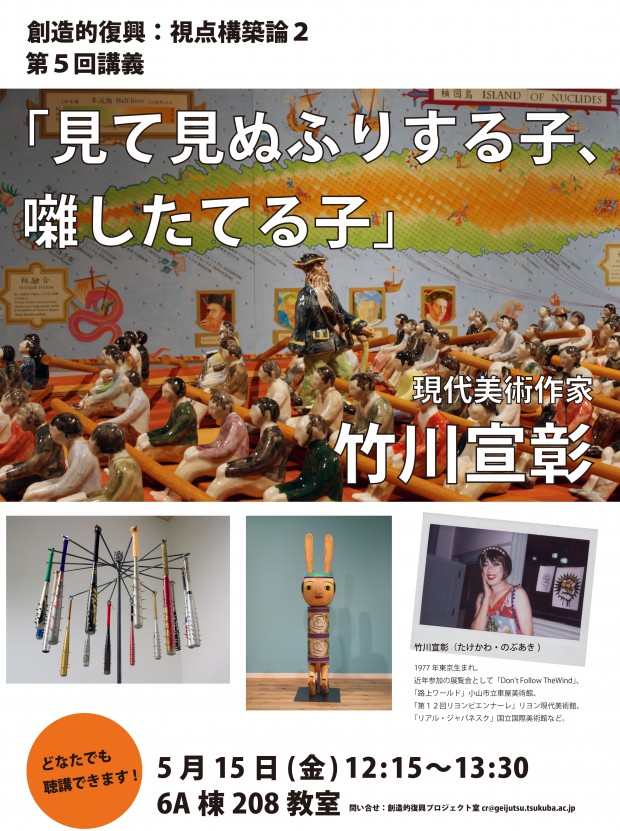
Creative Reconstruction: Vision Formulation 2, 4th Session
At the Creative Reconstruction: Vision Formulation 2, 4th Session, Shuji Akagi, a high school art teacher, was invited and he gave a talk titled, “The Fukushima I Saw”.
His talk was centered on the photographs he has been taking since immediately after the Great East Japan Earthquake and about the city of Fukushima. Because Fukushima is located only 64 km from the Fukushima Dai-ichi Nuclear Power Station, the radiation dose is high and decontamination works are being carried out in many places. In Akagi’s photographs, there are many scenes of decontamination works going on right next to people commuting to school and work.
He said that, ever since the catastrophic earthquake, he himself and people around him are exercising a form of “Masking out of consideration for others”. People have not been able to express their true feelings in fear of hurting someone else, and it is something that every single citizen seems to be doing for one reason or another. He decided to let that all come out. Akagi’s lecture inspired us to think about methods of and the meaning of “to convey”. (Akagi)
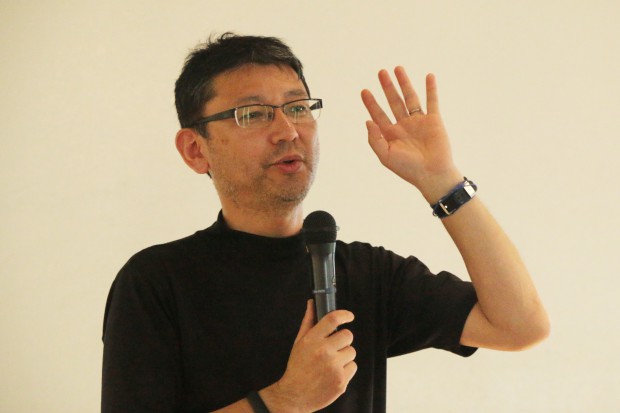
Iwaki Study Tour
On Apr. 25, we conducted a study tour of the Fukushima prefecture, Hama-dori area.
It was planned with the objective to interview people actually living in the local area 4 years after the Great East Japan Earthquake and Fukushima Dai-ichi Nuclear Power Station accident. Twenty-four students and 8 members of the faculty participated.
At Tomioka-cho, our first stop, Chikako Nishihara, who is a narrator at the Tomioka-cho Otagaisama Center, acted as our guide. Nobody lives in the town where de-contamination is being carried out at a rapid rate, and one is left with an image of the inorganic scenery along with the thoughts of the residents that Nishihara spoke of.
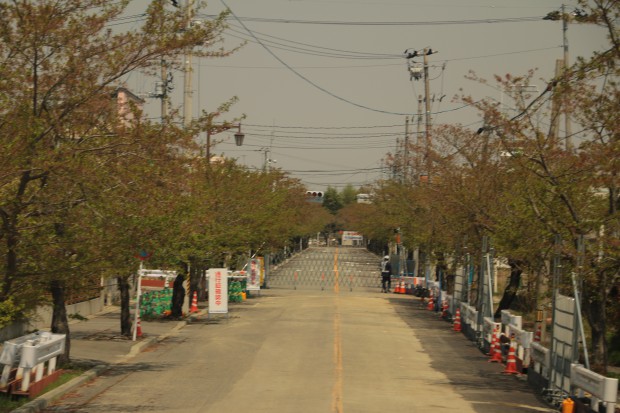
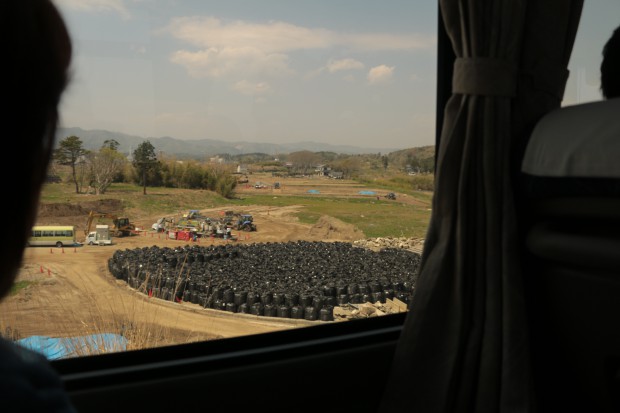 Next, we visited the Tokyo Electric Power Company’s Fukushima Revitalization Headquarters in Naraha-cho and asked Yoshiyuki Ishizaki, the representative of the institution about the current situation of the post-accident operations and about their revitalization efforts. Since it was a visit after seeing a town with no inhabitants, the members were eager to ask many questions and each one was answered.
Next, we visited the Tokyo Electric Power Company’s Fukushima Revitalization Headquarters in Naraha-cho and asked Yoshiyuki Ishizaki, the representative of the institution about the current situation of the post-accident operations and about their revitalization efforts. Since it was a visit after seeing a town with no inhabitants, the members were eager to ask many questions and each one was answered.
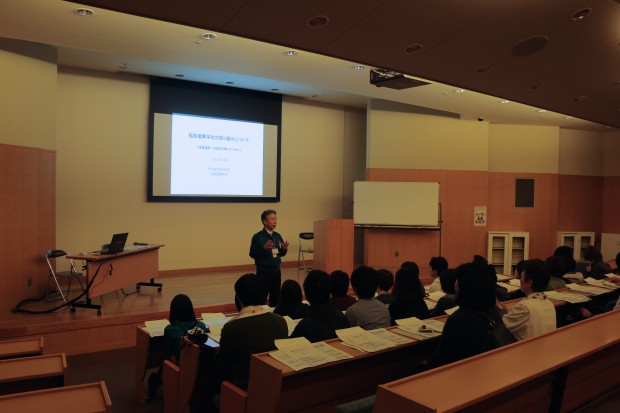
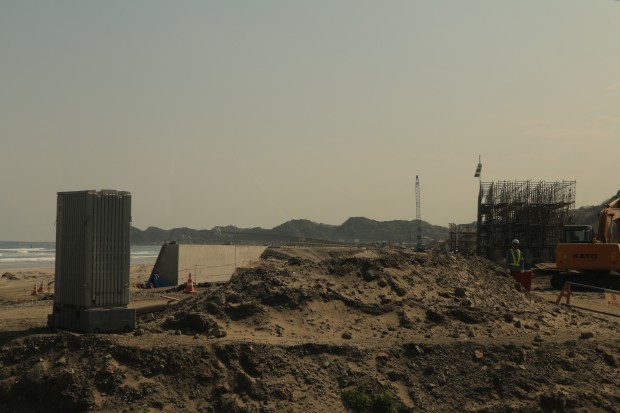 We interviewed Toyoda-san of the Nakanosaku Project at Seikou-kan near Nakanosaku port in Iwaki city. The Seikou-kan is an old house built 200 years ago, which they renovated by hand with the help of the local community, and it is open to the locals. Preparations for a mini-concert to be held that evening were going on.
We interviewed Toyoda-san of the Nakanosaku Project at Seikou-kan near Nakanosaku port in Iwaki city. The Seikou-kan is an old house built 200 years ago, which they renovated by hand with the help of the local community, and it is open to the locals. Preparations for a mini-concert to be held that evening were going on.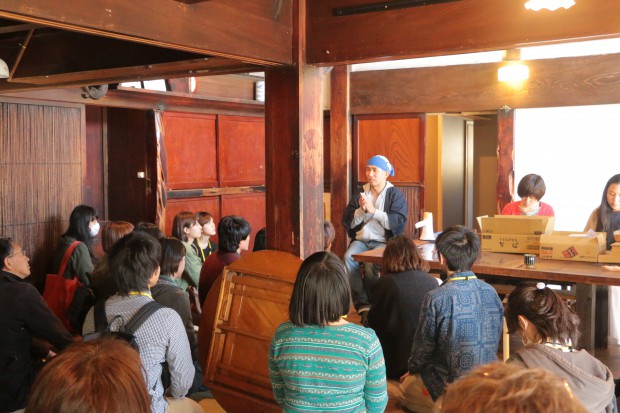 Our last visit was to Izumitamatsuyu Temporary Housing, which is where people from Tomioka-cho, our fist place of visit, are taking refuge. The previously mentioned Nishihara-san together with Norio Horiuchi met us. His regret of not being able to go back to the house he was born and raised in was conveyed from every word he spoke.
Our last visit was to Izumitamatsuyu Temporary Housing, which is where people from Tomioka-cho, our fist place of visit, are taking refuge. The previously mentioned Nishihara-san together with Norio Horiuchi met us. His regret of not being able to go back to the house he was born and raised in was conveyed from every word he spoke.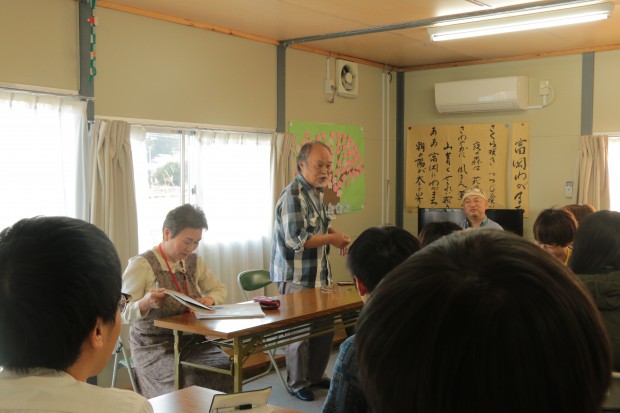 On the way back, thinking about what we had observed during this visit in light of our experiences and knowledge, every one of us pondered about the relationship it has to our lives. As we are in the final year of the project, we would like to make effective efforts in expanding our work. (Hayashi)
On the way back, thinking about what we had observed during this visit in light of our experiences and knowledge, every one of us pondered about the relationship it has to our lives. As we are in the final year of the project, we would like to make effective efforts in expanding our work. (Hayashi)
